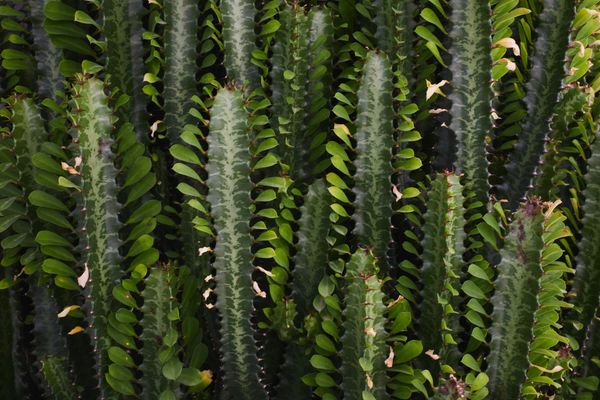African Milk Tree Care Guide
How to grow and care for African Milk Tree (Euphorbia trigona)
The Euphorbia trigona, commonly known as the African Milk Tree, is a striking succulent native to Central Africa. Known for its vertical, architectural growth and lush green, tri-sided stems adorned with spines and small leaves, it makes a captivating addition to any indoor plant collection. Despite its exotic appearance, the African Milk Tree is a relatively low-maintenance plant, making it an excellent choice for both novice and experienced plant enthusiasts.

Disclosure: This content includes affiliate links, which means we may earn a commission if you click on a link and make a purchase. As an Amazon Associate, we earn from qualifying purchases. This comes at no extra cost to you and helps offset the cost of running Leafwise. Please read our disclaimer for more info.
Table of Contents
Care
Light
Euphorbia trigona thrives in bright, indirect sunlight and can tolerate some direct morning sun. Prolonged exposure to intense midday sunlight may cause scorching. Place the plant near an east- or west-facing window, and slowly acclimate it to direct light if transitioning from lower light conditions.
Watering
Water sparingly, allowing the soil to dry out completely between waterings. During the growing season (spring and summer), water about once a week, depending on humidity and light. To check soil moisture, insert your finger about an inch deep—if dry, it's time to water. In fall and winter, reduce watering to once every 4–6 weeks or when the soil is completely dry. Overwatering is a common cause of root rot.
Temperature
Maintain temperatures between 65–80°F (18–27°C). Euphorbia trigona can tolerate brief drops to 50°F (10°C), but avoid prolonged exposure to cold. Keep the plant away from drafts, open windows, and heating vents.
Soil
Use a well-draining cactus or succulent mix. For better drainage, amend the soil with perlite, pumice, or horticultural sand. Always use containers with drainage holes to prevent excess moisture buildup.
Fertilization
Fertilize lightly once a month during the growing season with a diluted cactus or succulent fertilizer. Avoid fertilizing during the fall and winter months when the plant is dormant.
Maintenance
Pruning
Prune during the growing season (spring or summer) to control the plant’s height and shape. Pruning can also prevent top-heaviness due to its shallow root system. Use sterilized tools, and wear gloves and protective eyewear to avoid contact with the milky, toxic sap.
Cleaning
Dust can accumulate on the plant’s surface. Gently wipe it with a damp cloth or use a soft brush to keep it clean and promote healthy photosynthesis.
Repotting
Repot every 2–3 years or when the plant becomes root-bound. Signs include roots circling the pot bottom or emerging through drainage holes. Select a slightly larger pot with drainage and refresh the soil to support continued healthy growth.
Propagation
Euphorbia trigona is easily propagated through stem cuttings, ideally during the spring or early summer.
- Take a healthy cutting using sterilized tools.
- Allow the cutting to dry and callous for several days.
- Plant in a well-draining succulent mix.
- Water lightly and place in bright, indirect light.
- Once roots are established, resume normal care.
Common Issues
Pests
Euphorbia trigona is generally pest-resistant but may occasionally attract spider mites or mealybugs.
- Symptoms: Fine webbing, white cotton-like patches, or distorted growth.
- Solution: Inspect the plant regularly. Use insecticidal soap, neem oil, or a cotton swab dipped in rubbing alcohol to remove pests.
Diseases
Root rot is the most common disease and is typically caused by overwatering.
- Prevention: Use well-draining soil and allow it to dry between waterings.
- Solution: Remove the plant from the pot, trim away any rotting roots, and repot in fresh, dry soil. Adjust your watering schedule moving forward.
Etiolation
- Cause: Insufficient light can lead to etiolation, where the plant becomes stretched and pale.
- Solution: Move the plant to a brighter location with indirect or filtered sunlight to encourage compact, healthy growth.
Yellowing
- Causes: Overwatering, poor drainage, or lack of light.
- Solution: Let the soil dry thoroughly between waterings. Ensure the plant is receiving adequate light. Repot in fresh, well-draining soil if necessary.
With proper care, Euphorbia trigona will flourish as a bold, sculptural addition to your indoor garden. Keep in mind that its milky sap is toxic if ingested and may irritate the skin—always handle with care and keep out of reach of pets and children.
